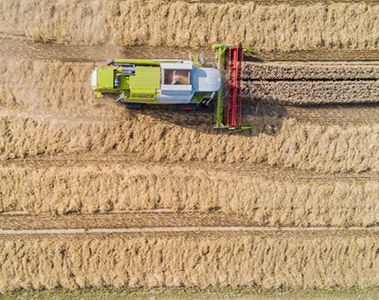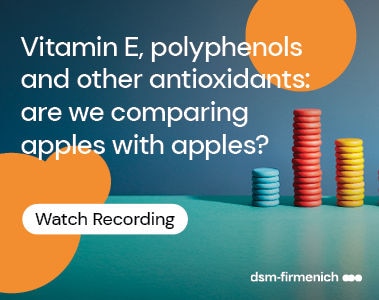Vitamin E is deposited in a dose-dependent way, in cellular and subcellular membranes (mitochondria, microsomes), which are rich in fatty acids, and thus becomes an integral part of these structural elements, beneficially influencing the fluidity, the structural integrity and the functionality of biological membranes in all cells of the organism (Lauridsen and Jensen, 2012).
As mentioned above, a-tocopherol is well recognized and accepted as nature’s most effective lipid-soluble, chain-breaking antioxidant, protecting cellular membranes from being attacked by lipid peroxyl radicals. Vitamin E prevents the propagation of lipid peroxyl radicals in cellular membranes. Lipid peroxyl radicals react 1,000 times faster with vitamin E than with polyunsaturated fatty acids (Buettner, 1993).
The physiological importance of vitamin E goes beyond being a powerful antioxidant. It is required for normal growth and reproduction; it helps maintain the structural integrity of all tissues; it supports the development of the nervous system and substantially contributes to optimum health and disease resistance of farm animals due to its modulating effects on the immune system. Deficiency of vitamin E in pigs and poultry results in severe diseases such as the Mulberry heart disease and muscular dystrophy (“white muscle disease”) in pigs, and encephalomalacia (known as “crazy chicken syndrome”) and exudative diathesis (chicken). Sub-clinical vitamin E deficiency is hardly detectable but can result in retarded growth, impaired feed conversion, diminished fertility, higher susceptibility to infectious diseases, reduced stress resistance and impaired welfare of farm animals. In addition to the above, animal physiological requirement, vitamin E plays an important role for the nutritional value, and the product quality, e.g. organoleptic properties of meat and eggs.
The minimum vitamin E requirements, those required primarily for avoiding deficiency symptoms, are set by NRC (National Research Council, 2012) in the range of 10 mg/kg feed and 45 mg/kg feed respectively for swine for fattening and breeders and around 10 mg/kg feed for broilers (National Research Council, 1994).
However, more recent nutritional specifications of poultry genetic companies suggest a much higher supplementation for broilers in the range of 80, 50-65 and 50-55 mg/kg feed respectively for starter, grower and finisher (Aviagen, 2021; Cobb, 2020).
National Swine Nutrition Guide (2010) recommends 60 mg/kg feed for piglets and around 40 for fatteners.
dsm-firmenich OVN Optimum Vitamin Nutrition® (2022) for example, recommends 105-160 mg/kg feed for piglets and 64 to 105 mg/kg feed for fatteners whereas for broilers supplementation level is set at 160 to 210 mg/kg feed in the starter feed and 55 to 105 mg/kg feed for grower and finisher phases.
For both species, higher levels are suggested to take advantage of the impact of vitamin E at supra-nutritional levels on immune modulation in early phases (Tengerdy and Nockels, 1975; Franchini et al., 1986; Leshchinsky and Klasing, 2003; Lauridsen and Jensen, 2005; Lauridsen, 2002) and on meat quality attributes in later stages (Grau et al., 2000; Koreleski et al., 2006; Hoppe et al., 1993; Morrissey et al., 1996; Sales J. and Koukolová V., 2011)
Moreover, Vitamin E requirements may increase under conditions of heat stress as has been demonstrated in layers (Bollengier-Lee et al., 1998 and 1999) and broilers (Maini et al., 2007).
Conclusion: higher levels of vitamin E have multiple benefits
It is reasonable to conclude that vitamin E functionalities are multifaceted and its supplementation in feed is recommended at levels higher than minimum requirements (NRC, 2012/swine; NRC, 1994/poultry) to maximize the benefit of its multiple functionalities according to specific needs. Based on the existing knowledge, the network of antioxidants in the body does not call for replacement of one antioxidant with another but instead supplies all the required elements for the antioxidant system to ensure an efficient protection of the body towards oxidative stress.



